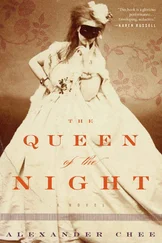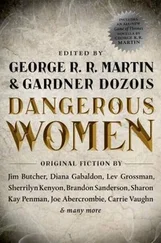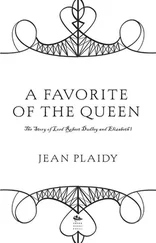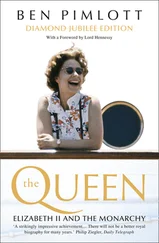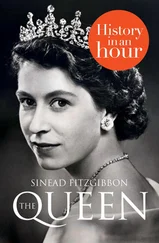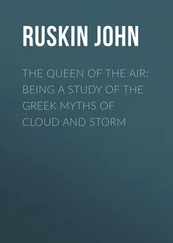As cousins, Philip and young Elizabeth had crossed paths twice, first at a family wedding in 1934 and then at the coronation of King George VI in 1937. But it wasn’t until July 22, 1939, when the King and Queen took their daughters to the Royal Naval College at Dartmouth, that the thirteen-year-old princess spent any time with Philip, who was a cadet in training at the school.
At the behest of Dickie Mountbatten, an officer in the British navy, Philip was invited to have lunch and tea with the royal family. Crawfie observed the sparks, later writing that Lilibet “never took her eyes off him,” although he “did not pay her any special attention”—no surprise since he was already a man of the world, and she only on the cusp of adolescence. More revealing was the depth and durability of Elizabeth’s attraction, and her single-minded determination to marry him.
During the war years, Philip came to visit his cousins occasionally at Windsor Castle, and he and the princess corresponded when he was at sea. He served with the British Royal Navy in the Mediterranean and the Pacific, and was cited for gallantry after the Battle of Matapan against Italian forces in 1942. Friends and relatives detected a flutter of romance between Philip and Elizabeth by December 1943, when he was on leave at Windsor for Christmas and watched Elizabeth, then seventeen, perform in the “Aladdin” pantomime. Queen Mary wrote to her friend Mabell, the Countess of Airlie, shortly afterward that the cousins had “been in love for the past eighteen months. In fact longer, I think.” The King was quite taken by Philip, telling his mother the young man was “intelligent, has a good sense of humour and thinks about things in the right way.” But both the King and Queen thought that Lilibet was too young to consider a serious suitor.
Philip visited Balmoral in the summer of 1944, and he wrote Queen Elizabeth about how he savored “the simple enjoyment of family pleasures and amusements and the feeling that I am welcome to share them.” That December, while Philip was away on active duty, his father died of cardiac arrest at age sixty-two in the room where he lived at the Hotel Metropole in Monte Carlo. All he left his twenty-three-year-old son were some trunks containing clothing, an ivory shaving brush, cuff links, and a signet ring that Philip would wear for the rest of his life.
While Philip was completing his deployment in the Far East, Lilibet enjoyed the freedom of the postwar period. In August 1945 she reveled in the country life at Balmoral, stalking stags and picnicking on the moors, singing “descants and ditties” with her parents. Her one unanticipated sadness came in December 1945 when her nanny, Allah, died after a brief illness during the family’s first Christmas at Sandringham, which had just been reopened after being shuttered for six years.
Back in London that autumn, Lilibet had her own suite in Buckingham Palace with a view of Big Ben and a decor of “pink and fawn” floral fabric, as well as her own small household: two ladies-in-waiting, a footman (also known as a page), a housemaid, and Bobo, now serving as her dresser (the royal term for a lady’s maid who attends to personal matters). She invited Mrs. Vicary Gibbs, who was one of her ladies-in-waiting, her cousin Lady Mary Cambridge, and several guardsmen to a house party at Sandringham, turned up the radio, entertained them at dinner, and joined in games.
At a party given by the Grenfell family at their Belgravia home in February 1946 to celebrate the peace, the princess impressed Laura Grenfell as “absolutely natural.… She opens with a very easy and cosy joke or remark.… She had everyone in fits talking about a sentry who lost his hat while presenting arms.” Elizabeth “danced every dance.” She was “thoroughly enjoying herself” as the “Guardsmen in uniform queued up.”
Philip finally returned to London in March 1946. He took up residence at the Mountbatten home on Chester Street, where he relied on his uncle’s butler to keep his threadbare wardrobe in good order. He was a frequent visitor to Buckingham Palace, roaring into the side entrance in a black MG sports car to join Lilibet in her sitting room for dinner, with Crawfie acting as duenna. Margaret was invariably on hand as well, and Philip included her in their high jinks, playing ball and tearing around the long corridors. Crawfie was taken with Philip’s breezy charm and shirtsleeve informality—a stark contrast to the fusty courtiers surrounding the monarch.
During a month-long stay at Balmoral late in the summer of 1946, Philip proposed to Elizabeth, and she accepted on the spot, without even consulting her parents. Her father consented on the condition that they keep their engagement a secret until it could be announced after her twenty-first birthday the following April. Like the princess, Philip didn’t believe in public displays of affection, which made it easy to mask his feelings. But he revealed them privately in a touching letter to Queen Elizabeth in which he wondered if he deserved “all the good things which have happened to me,” especially “to have fallen in love completely and unreservedly.”
Palace courtiers and aristocratic friends and relatives of the royal family viewed Philip suspiciously as a penniless interloper. They were irked that he seemed to lack proper deference toward his elders. But mostly, they viewed him as a foreigner, specifically a “German,” or in their less gracious moments, a “Hun,” a term of deep disparagement after the bloody conflict so recently ended. Even though his mother had been born in Windsor Castle, and he had been educated in England and served admirably in the British navy, Philip had a distinctly continental flavor, and he lacked the clubby proclivities of the Old Etonians. What’s more, the Danish royal family that had ruled in Greece was in fact predominantly German, as was his maternal grandfather, Prince Louis of Battenberg, and his sisters’ German husbands continued to be a touchy subject.
Glossed over was the fact that German bloodlines had been tightly woven into the British royal family since the eighteenth century. After the Glorious Revolution of 1688 when Catholic King James II fled England, the crown passed to his Protestant daughter Mary II and her husband William III, who ruled together. Following their deaths, Mary’s sister Queen Anne took the throne until she died in 1714. But Anne left no successor, which triggered the provisions of the Act of Settlement of 1701, a constitutional law passed by Parliament to ensure a Protestant would occupy the throne. It stipulated that the crown could only pass to the descendants of Sophia, the Electress of Hanover, the granddaughter of James I. At the time of Queen Anne’s death, the successor was Sophia’s son, George Louis, who became King George I of Great Britain, the first sovereign in the House of Hanover. Neither he nor his German-born son, King George II, spoke English. King George III, who took the throne in 1760, was the first in the Hanover line born in Britain.
In the nineteenth century, the German strain in the British line of succession was further strengthened when Edward the Duke of Kent, the fourth son of George III, married the Princess of Saxe-Coburg-Saalfield and produced Princess Victoria, who took the throne on the death of her uncle, King William IV. Queen Victoria raised the German stakes yet again by choosing Prince Albert of Saxe-Coburg-Gotha as her husband, taking on his name and dropping the House of Hanover. Their grandson, George V, in turn married Princess Victoria Mary of Teck, who had a German father, Prince Francis, the Duke of Teck. Although born in Kensington Palace, Queen Mary always spoke with a slight German accent.
During World War I, amid strong anti-German feeling in Britain, King George V made a strategic decision to dispel the long Teutonic shadow from the royal family’s image. By royal proclamation in 1917, he transformed the House of Saxe-Coburg-Gotha into the House of Windsor, after the ancient castle. At the same time, he anglicized the names of collateral members of the family: Battenberg became Mountbatten, and Teck became Cambridge and Athlone.
Читать дальше

